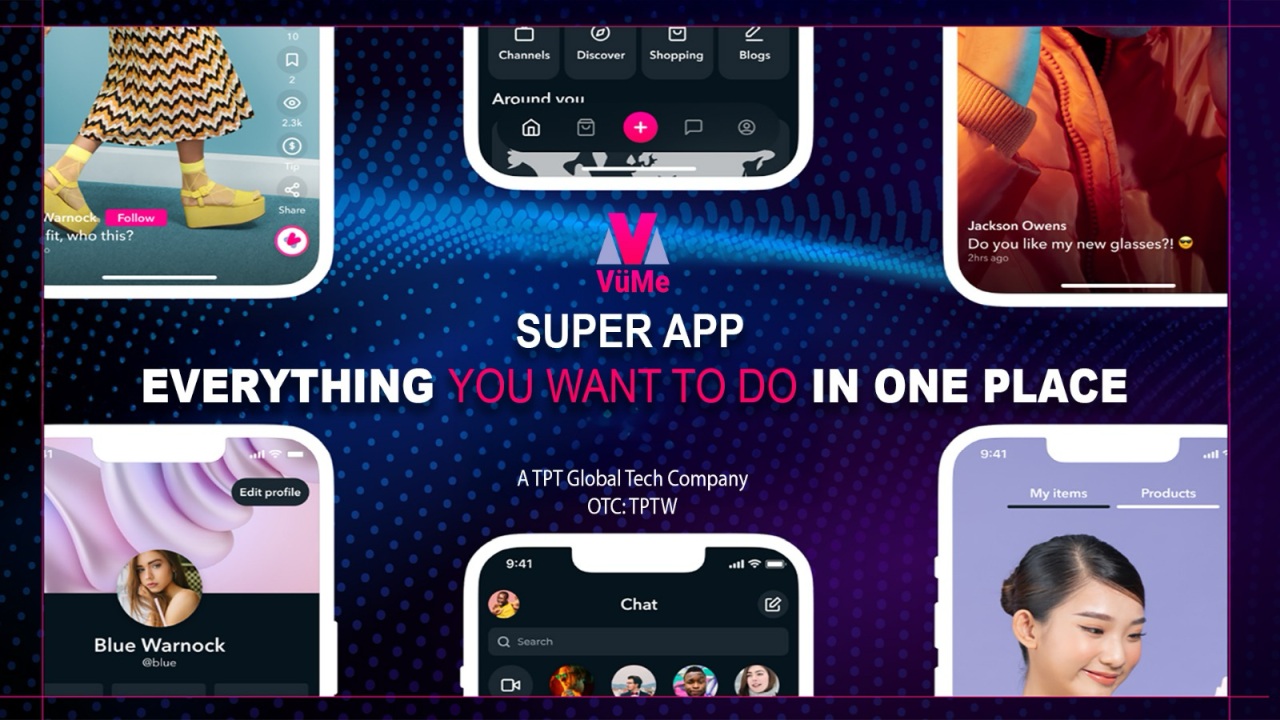Industry Thought Leadership
Super Apps: Catalysts for Revenue Growth and Digital Equity Across Emerging Markets
May, 2025As the telecommunications industry navigates its next evolution, two imperatives have emerged as central to its global mission: advancing revenue growth and closing the digital divide. In this context, the rise of super apps presents a transformative opportunity. These all-in-one digital ecosystems—integrating messaging, payments, entertainment, commerce, education, and financial services—have the power to revolutionize how connectivity is monetized while dramatically expanding digital inclusion for underserved populations.
Super apps represent a critical juncture for governments, mobile operators, and digital platforms alike. For governments, they provide a scalable infrastructure to drive socio-economic development. For operators, they enable the diversification of revenue streams beyond voice and data, unlocking new business models. For super app platforms, they offer exponential user acquisition and engagement in markets ripe for digital transformation. And for consumers—especially those in underbanked or rural areas—super apps can serve as a digital lifeline, offering tools for financial empowerment, education, healthcare, and civic participation.
Designed to address the needs of emerging and underserved communities, VuMe integrates livestreaming, video-on-demand, eCommerce, mobile wallet, messaging, rewards, news, remittance, job portals, education, and even digital banking. All of these features are accessible in a low-bandwidth, data-efficient environment, optimized for 2G/3G regions where legacy apps fall short.
The potential of super apps to alter the economic demographics of entire regions is immense. This article explores how this potential can be fully realized through cross-sector collaboration and strategic alignment across regulatory, infrastructure, and digital platforms.
At my company, we’ve spent the past seven years developing what we believe is one of the most advanced super app platforms in the Western Hemisphere: VuMe. Designed to address the needs of emerging and underserved communities, VuMe integrates livestreaming, video-on-demand, eCommerce, mobile wallet, messaging, rewards, news, remittance, job portals, education, and even digital banking. All of these features are accessible in a low-bandwidth, data-efficient environment, optimized for 2G/3G regions where legacy apps fall short.

So how does a super app like VuMe advance revenue growth for telecom operators and governments?
The Telecommunications Landscape: From Infrastructure to Intelligence
Over the past two decades, telecom operators have transitioned from being infrastructure-centric entities to enablers of digital ecosystems. However, monetization strategies have not always kept pace with the explosion of data consumption. With over-the-top (OTT) platforms now capturing the majority of user engagement and data traffic, traditional operators often find themselves providing the bandwidth without receiving proportional returns.
Super apps offer a new paradigm. Rather than allowing value to escape their networks, operators can integrate or partner with super app platforms to capture revenue at the service layer. The shift is not merely about providing access but about becoming an active participant in the value chain that sits atop that access.
This is particularly critical in regions where Average Revenue Per User (ARPU) remains low, infrastructure costs are high, and rural connectivity is sparse. The answer lies not in increasing tariffs or hardware investments alone but in creating scalable digital ecosystems that generate new revenue through services, transactions, advertising, and data insights.
Super Apps: Multi-Dimensional Revenue Engines
Unlike standalone applications, super apps bundle multiple revenue streams within a single platform. These streams typically include:
- Peer-to-peer payments and remittances
- eCommerce and dropshipping marketplaces
- Advertising and sponsored content
- Subscription-based video on demand (VOD) and live events
- Creator monetization and affiliate programs
- Financial services including lending, micro-insurance, and mobile banking
- Telehealth and remote education access
Each of these verticals generates monetizable interactions that benefit all players in the ecosystem. Mobile operators can share in app-related revenue via strategic agreements or service bundling. Governments benefit through taxation, formalization of informal economies, and improved delivery of public services. Super app companies grow user retention and engagement, driving exponential data and monetization opportunities.
For example, a mobile operator with 10 million subscribers that successfully incentivizes 10% adoption of a partnered super app, with each user generating $1 per month in shared service revenue, could realize $12 million annually—revenue previously untapped and independent of core voice or data plans. At scale, these models can fund infrastructure expansion into low-ARPU areas that were previously economically unviable.
Advancing Digital Equity Through Monetization
Beyond economic return, super apps are uniquely positioned to address digital inequity—particularly in emerging markets where access to broadband, financial systems, healthcare, and education remains limited.
Digital equity is not merely about providing connectivity; it's about ensuring that connectivity translates into tangible improvements in people's lives. Super apps achieve this by placing life-enhancing services into the hands of individuals with limited resources, often via low-bandwidth, mobile-first platforms. For example:
- In remote agricultural villages, farmers can access market pricing, weather forecasts, and digital wallets to receive payments for crops.
- In urban slums, micro-entrepreneurs can launch digital storefronts and conduct business via dropshipping, without holding inventory.
- In migrant communities, families can stay connected via chat and video, while remitting funds securely through in-app wallets.
- In areas with poor health infrastructure, citizens can receive telehealth consultations, medication reminders, and vaccination updates.
- These capabilities transform passive mobile users into active participants in the digital economy. By aligning monetization with impact, super apps create a sustainable path for both private sector profit and public sector progress.
Government’s Role in a Collaborative Ecosystem
For governments, super apps offer a tool to both stimulate local economies and deliver more efficient public services. Regulatory frameworks that enable partnerships between telecoms, fintech, and platform providers can catalyze this transformation.
Key policy levers include:
- Enabling mobile money and digital ID systems
- Facilitating data interoperability and eKYC (Know Your Customer) standards
- Allowing spectrum allocation and infrastructure sharing to reduce rural deployment costs
- Providing tax incentives for digital platforms that localize services and content
- Supporting public-private partnerships for digital literacy and inclusion initiatives
Governments can also use super apps to deliver public services directly—such as issuing digital health records, providing remote education during crises, or disbursing aid during natural disasters. The app becomes not only a commercial channel but a public utility in its own right.
When governments embrace super app ecosystems, they position their nations to leapfrog traditional development barriers. The resulting tax revenues, employment growth, and GDP impact can be profound.
Mobile Operators: From Pipes to Platforms
Mobile operators stand to be among the biggest beneficiaries—if they embrace the role of platform enablers rather than data pipes. By integrating or white-labeling super apps, operators can:
- Create bundled plans that include premium app access
- Share in revenue from app-based services like streaming or financial transactions
- Increase data usage through high-engagement services
- Enhance customer retention via app-driven loyalty and rewards programs
- Extend service coverage profitably into low-density or low-income areas
- Additionally, super apps can be used to drive customer onboarding, identity verification, SIM registration, and self-service billing—reducing operational costs and enhancing user experience.
In this model, operators become service providers and revenue-sharing partners, not simply infrastructure hosts. This approach aligns with emerging trends in telco-fintech convergence and telco-media bundling already underway in various regions.
Super App Platforms: Strategic Expansion Through Local Partnerships
For super app companies, partnerships with mobile operators and governments offer the fastest route to user scale and regional relevance. Localization—through language, currency, content, and payment methods—is critical to success. Integrating with local operator billing systems, leveraging government identity programs, and aligning with regulatory compliance frameworks make adoption smoother and more sustainable.
Furthermore, super apps can aggregate vast amounts of user data—purchasing patterns, location behavior, content preferences—which becomes a valuable resource for targeted advertising, product development, and market intelligence. When responsibly managed, this data can also inform public policy, disaster response, and urban planning.
Through such strategic partnerships, super apps can expand quickly in markets with high mobile penetration but low smartphone or banking access—offering services via USSD, lightweight web apps, or embedded SIM applications.
A Win-Win-Win Ecosystem
The intersection of government policy, telecom infrastructure, and platform innovation has never been more synergistic. Super apps represent a win-win-win model:
- Governments gain tools for economic inclusion, improved service delivery, and digital governance.
- Mobile operators unlock new monetization paths and extend reach into unserved areas.
- Super app platforms gain rapid user adoption and sustainable engagement.
- Consumers receive access to life-changing digital services, economic participation, and global connectivity.
The challenge lies in aligning incentives and building trust across sectors. Transparency in data use, fair revenue sharing, interoperability, and localized service design will determine the long-term success of super app ecosystems.
Closing the Digital Divide While Accelerating Growth
The digital divide is not just a gap in connectivity—it’s a gap in opportunity. Super apps have the power to close that gap by making smartphones more than just communication tools. They become banks, schools, clinics, marketplaces, and civic centers.
This convergence of services on a single platform creates economies of scale that were not previously available to rural or underserved populations. With every download, a user enters a digital economy with multiple entry points for earning, learning, and connecting.
As emerging markets continue to represent the bulk of mobile subscriber growth globally, the role of super apps becomes not just relevant—but essential. Their ability to transform regional economic demographics, accelerate operator profitability, and deliver on the promise of digital equity makes them one of the most important innovations in modern telecommunications.

